After just one week spent in Mumbai, India, a student from Vibgyor High school asked me, “How would you describe India in one word?”.
I gaped at her in horror. “Just one word? That’s impossible.”
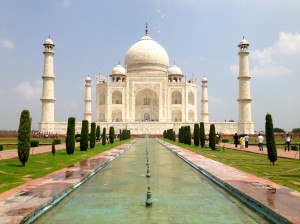
After spending three weeks there on the UKIERI Study India program from August to September 2013, and a lot longer reflecting on my experience, I feel even further from answering that question. It was an absolute whirlwind: from a 5am bicycle ride through the streets of Mumbai seeing fish markets and temples and visiting Khotachiwadi (an area of Mumbai which has retained its Portugese heritage), to gaining work experience at the Supreme Court of India and seeing the Taj Mahal in all its glory. It felt like three weeks of truly living and breathing India, with a healthy dose of sight-seeing in between.
But first – let me be frank with you all. Before discovering Study India (and establishing that it was almost completely funded by the government, minus flights, visa and spending money), I had never really considered visiting India. With siblings in Australia I’ve been lucky enough to travel to the Southern Hemisphere, exploring much of Oz, as well as Singapore, New Zealand and Bali – and I’ve been on family holidays and school trips to France, Spain and Belgium. But India? Except for my appreciation of Eat Pray Love, Slumdog Millionaire and The Best Exotic Marigold Hotel, I can honestly say that I had never thought about the country. But after reading up on the program, and doing some more research into India (Duh, it’s the home of yoga, and I love yoga! Immediate connection!), I applied, and was lucky enough to be one of less than 5% of applicants that was accepted onto the program.
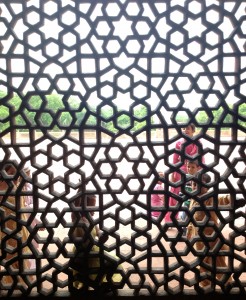
Now, I truly believe that it’s impossible to set foot in India (or any country) without having preconceptions about what you might find, whether or not you believe them. You know how it is; you mention that you’re planning on visiting somewhere, and everybody and their mum wants you to know exactly what they think of that place, and what their neighbour’s second-cousin-twice-removed’s son thought when he was there. With India, it was the downsides that were repeated to me most frequently: beggars, bureaucracy, and open sewage. The upside was mainly limited to “Great food! …but don’t drink the water.”
Admittedly, when I arrived in Mumbai on a humid, cloudy afternoon, tired after my 16+ hour journey and delightfully sweaty on contact with the muggy outside air, I wasn’t at all surprised when we spent an hour arguing over prices for taxis, or by the street sellers knocking on my window mid-traffic jam, trying to sell me a “100% genuine!” photocopied version of Fifty Shades of Grey. Yes, it was immediately different to England – but that, as any traveller can attest to, was also immediately satisfying. All summer I had dreamed of having an adventure, and here I finally was.
Besides, when you’re actually in India, it’s easy to say that none of the perceived problems seem to matter quite as much. Yes – I did give possibly rabid dogs an extremely wide berth for the first week, before I realised that if they didn’t bother the people lying on the street, why would they bother me? And yes, I did struggle for a few days with the constant stares from everyone around me. But I can’t blame them – not only am I the proud owner of rather pale skin (thanks to my father’s ginger genes!), but I too have a tendency to look a little too long when I see groups of tourists wondering around, looking lost (and as we were, red-faced). Besides, 98% of the time when you looked back at the stares and offered them a smile, they would return one twice as big.
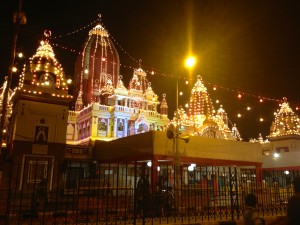
Whilst participating in Study India, it quickly became apparent that there was an impossible amount to see and experience and feel. For example; I was fortunate to be in New Delhi on Janmashtami (Krishna’s birthday), and the intense spirituality I felt when visiting the Hindu temple Birla Mantir made me quite emotional; there was an incredible, visible outpouring of joy and love from everyone in attendance that I have never witnessed during a religious festival in England. An overnight train from Mumbai to New Delhi (I am now much more comfortable in the presence of rats and cockroaches!), a morning yoga class with the yoga instructor for the Indian cricket team, and multiple early wake-ups in favour of ‘Bollywood’ dance classes also helped the three weeks to be quite unlike anything else I’d ever encountered before.
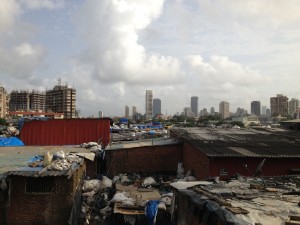
There were two particularly eye opening experiences that I had whilst in India. The first was just a few days in: we visited Dharavi, one of Asia’s largest slums. I was greeted with a bustling manufacturing district, where plastic picked off the street was being recycled into pellets to be incorporated into a variety of objects. It was messy and dirty (which the monsoon weather had surely made worse), and you had to be careful to avoid the hot sparks being thrown out by deafeningly noisy machines. Who wanted to work in those conditions? Young men from rural villages who could work hard and save up for a few months before sending the money home, earning substantially more than they would in agriculture. And where did they get those machines? Well, they were also made in Dharavi. It wouldn’t meet the health and safety standards in England, but it was a buzzing, self-regulating, self-contained body of activity; urbanisation and entrepreneurship at its finest. After the manufacturing district came the food market, and then the residential area. Brightly painted and well-cared for homes all squished into one area, the community atmosphere strong, and hoards of children running around after us, laughing hysterically at our names. Ultimately, Dharavi was nothing that I expected it to be. I expected squalor and hardship, but what I found was an abundance of elbow grease, pride, and happiness.
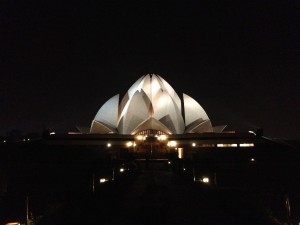
My second experience was a world away from the first. In Delhi, we visited the Lotus Temple, a Baha’i place of worship, and took part in a multi-faith prayer ceremony, in which prayers from six world religions (Buddhism, Christianity, Hinduism, Judaism, Sikhism and Baha’i) were read, or sang. I am not a religious person – I don’t believe in the existence of God(s), and I am sceptical about whether religion does the world much good in proportion to the harm that is and has been done in the name of faith. But, I would consider myself to be a spiritual person, and I make an effort to meditate every day. The Baha’i ceremony was incredibly beautiful, and the single best meditative experience I have ever had. I felt entirely at peace. For me, the ceremony represented ultimate harmony: the unity of all beings, through love, in the face of diversity. And to me, that is what religion should be about. To date, I can think of no other experience that instilled so much love and happiness within me as praying in the Lotus Temple.
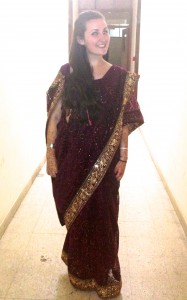
These are only two small snapshots of my time in India, but their uniqueness will forever inform my opinion of the country. It is by no means a perfect place, and I don’t see myself ever living or working there, particularly given my status as a woman: after all, during my time there, there was also numerous reports in the papers of sexual assaults on women, and the recent re-criminalisation of homosexual activity conflicts too greatly with my belief that all love is the same love. However, this won’t deter me from doing more travelling in India – there is so much more I wish to see!
I would highly recommend the UKIERI Study India program to anybody even remotely interested in India, international matters and global development. The student-friendly (almost) all-inclusive nature of the scheme and the experience to gain international work experience for the CV simply sweeten the pot. I am incredibly thankful that I was able to have such an experience.
I learnt so much about life and living it whilst I was in India, including developing an ability to be sensitive to other cultures when they seem so fundamentally different to your own. I have always suffered with wanderlust and experiencing India has helped to encourage that desire to travel so that I’ve now applied to study abroad for a year too.
As the saying goes, ‘travel is the only thing you buy that makes you richer’. So let me be penniless, and prosperous!

Well done Megan, great article! Seems like you had the best time. Also looking good in a Sari babes 🙂
Well done Megan, great article, seems like you had a great time. You look great in Sari babes 🙂
This sounds like an amazing experience! Your blog post just makes me want to travel and work abroad even more, well done Megan! 🙂
This is amazing. I’m so jealous of everything you got to experience. It sounds like a truly life changing experience, and I’m so happy that you got the chance to do this. And your writing of your time there is excellent.
Love how you were able to sum up a life-changing three weeks in a lovely blog post, Meg! Living vicariously through you, now made easier 🙂
Great blog! Sounds like an amazing life-changing experience! Well done, Meg
Very well written and very interesting, what a great experience!
Fantastic summary of our time in India! Reading this made me want to go back asap!
Fascinating and well written resume showing that the experience was really worthwhile and life enhancing
An honest description of a very personal experience, summarised beautifully – apply, apply, apply…
Brilliant blog post Megan! Really summed up SiP!